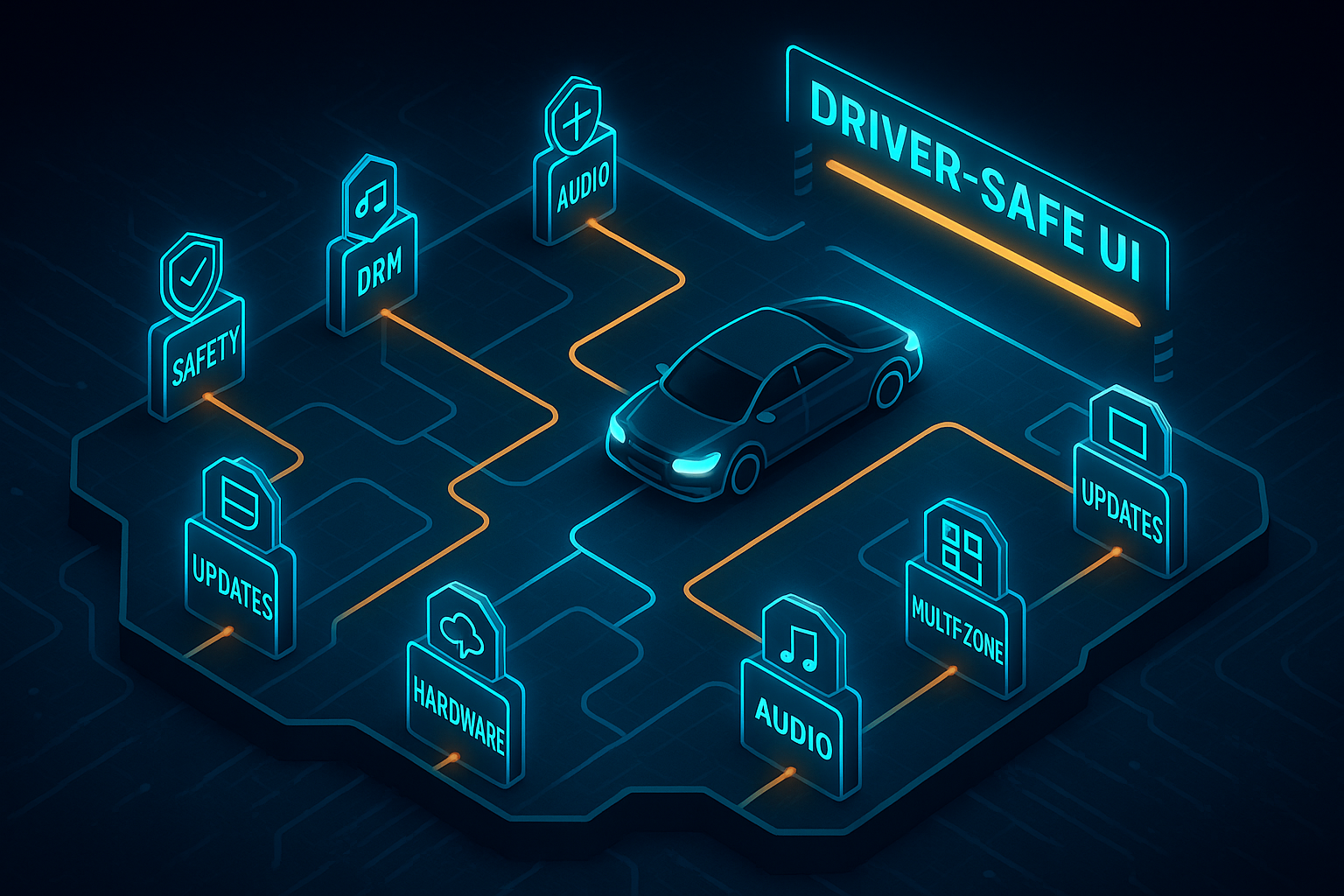Software defined Vehicle
Modern vehicles are essentially computers on wheels, and nowhere is this more evident than in the infotainment and connectivity stack. Under the hood, these systems are divided into logical partitions that allow multiple critical and non-critical software systems to coexist safely on the same hardware.

Modern vehicles are essentially computers on wheels, and nowhere is this more evident than in the infotainment and connectivity stack. Under the hood, these systems are divided into logical partitions that allow multiple critical and non-critical software systems to coexist safely on the same hardware.
Let’s break down the key building blocks:
1. IVI Partition (In-Vehicle Infotainment)
The IVI partition is what most users interact with — the brains behind the central touchscreen.
Key functions:
- Multimedia playback (audio/video)
- Navigation and maps
- Smartphone projection (CarPlay, Android Auto)
- App ecosystem (music, podcasts, weather, etc.)
- Human-Machine Interface (HMI) rendering
Characteristics:
- Runs on a rich OS like Linux or Android Automotive.
- Focused on user experience rather than safety.
- Can be rebooted or updated over-the-air without impacting the vehicle’s core functions.
2. SYS Partition (System / Safety Partition)
The SYS partition acts as the vehicle’s backbone, handling real-time, safety-critical, and connectivity tasks.
Key functions:
- Instrument Cluster: Displays speed, warnings, ADAS status, and tell-tale lights.
- Connectivity Module: Handles telematics, 4G/5G modem, OTA updates, and cloud communication.
- Gateway: Bridges vehicle networks (CAN, Ethernet) and securely routes data.
- Real-Time Tasks: Ensures deterministic, always-on operation.
Characteristics:
- Runs on a Real-Time OS (RTOS) or safety-certified Linux.
- Must remain functional even if IVI fails.
- Typically meets ISO 26262 functional safety standards (ASIL-B/C).
3. Instrument Cluster
Traditionally a separate ECU, many modern vehicles integrate the cluster into the SYS partition.
- Provides mission-critical information (speed, warnings).
- Receives non-critical data (navigation prompts, media info) from IVI.
- Prioritizes safety and availability over visual richness.
4. Connectivity Module
Connectivity is the gateway to the cloud.
- Manages cellular and Wi-Fi connections.
- Enables eCall, remote diagnostics, vehicle tracking, and OTA updates.
- Acts as a firewall between the outside world and vehicle networks.
5. Role of the Hypervisor
The hypervisor is the invisible layer that makes it all work together safely.
Its key roles:
- Isolation: Keeps IVI and SYS memory and processes separate.
- Real-Time Scheduling: Guarantees SYS tasks meet deadlines.
- Security Enforcement: Implements firewalls, secure boot, and trusted execution.
- Shared Resource Management: Virtualizes GPU, display, and I/O so multiple partitions can use them safely.
- Inter-Partition Communication: Provides secure channels (virtIO, SOME/IP, DDS).
This architecture allows independent OTA updates — IVI apps can be updated without re-certifying SYS safety functions, saving OEMs significant time and cost.
Why This Matters
This partitioned approach balances:
- Safety (no infotainment crash should compromise braking or warning lights)
- Security (limits attack surface from apps/hacks)
- Flexibility (enables frequent software updates)
- User Experience (rich UI without compromising real-time performance)
In other words, it’s the foundation of the software-defined vehicle.
Delivering exceptional infotainment software for the automotive industry
We organize for learning: small, cross-functional teams keep authority close to the work; we make feedback visible and improve in short, honest loops.



.svg)

.svg)

